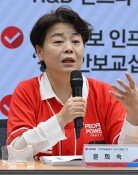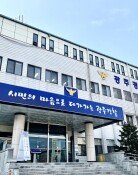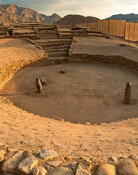Two Local Areas Will Act as Barometer of Election in December
Two Local Areas Will Act as Barometer of Election in December
Posted May. 21, 2007 03:01,
The local areas that showed the most similar correlation with national voting tendencies in the 14th, 15th, and 16th presidential elections are Goesan-gun, Chungbuk on the city, gun, and gu (relatively large area) level, and Balsan 2-dong, in eup, myoen, and dong (relatively small area) level.
The Dong-a Ilbo reached this conclusion after a two-month analysis on Korean voting tendencies using Geographic Information System (GIS) and Computer Assisted Reporting (CAR) to analyze past vote count information classified by areas by the National Election Commission.
In the 14th presidential election in 1992, when 42 percent of national voters voted for eventual election winner Kim Young-sam, 42.9 percent of voters in the Goesan-gun also supported Kim. In the 15th presidential election in 1997, when the eventual election winner Kim Dae-jung obtained 40.3 percent of the vote, Goesan-gun also showed similar percentage: 40.8 percent. In the 16th election in 2002, President Roh Moo-hyun gained 48.9 percent of the vote nationwide and 52.9 percent from Goesan-gun.
These statistics show that there is only a 1.8 percent difference in average in the number of votes the election winners obtained between Goesan-gun and national average: 0.9 percent in the 14th election, 0.5 percent in the 15th election, and 4 percent in the 16th election.
Balsan 2-dong also showed little deviation from the national average: 0.09 percent in the 14th election, 0.25 percent in the 15th election, and 0.49 percent in the 16th election.
However, experts say that it is difficult to see Balsan 2-dong as a barometer of national voting tendencies given that the population in this area moves frequently and that its population sizes are smaller than bigger areas.
Of 244 areas (at the city, gun, and gu level) nationwide, there are 46 areas in which all of the elected in three past presidential elections led the voting results. The Chungcheong area has the largest number (11 in South Chungcheong, seven in North Chungcheong, and five in Daejeon Metropolitan city), followed by Seoul and its adjacent areas (14 areas in Gyeonggi Province surrounding Seoul, four areas in Seoul, and two in nearby Incheon Metropolitan city). Lastly, Jeju has three areas.
Contrary to this, there was no such area to be found in the southern Yeongnam and Honam regions. This demonstrates that the voting tendencies in these regions are largely affected by the places of origin of candidates.
Meanwhile, the most closely contested area was the Youngsan-gu. The gap between the elected and runner up candidates on average was 0.7 percent: 1.6 percent in the 14th election, 0.4 percent in 15th election, and 0.1 percent in 16th election.
Among smaller areas on the eup, myeon, and dong level, the most closely contested area was Oryu 2-dong (Guro-gu, Seoul) with a 0.5 percent gap between winners and runners-up on average: 0.7 percent in the 14th election, 0.9 percent in the 15th election, and 0 percent in the 16th election.
The outcome of this analysis confirmed that the voters in Chungcheong region would likely exercise the upcoming elections casting vote. For example, Kim Young-sam, who elected the 14th president, won in 35 areas out of 38 in Chungcheong; Kim Dae-jung, the winner of the 15th election, won in 27 areas out of 32, and Roh Moo-hyun, the winner of the 16th election, won in 29 out of 32. This shows that candidates who won in the majority of Chungcheong areas went on to win the presidency.
Even though it is too early to judge the outcome of this years presidential election considering the frequent movement of population and election culture variability based on unexpected factors, experts predict that areas with similar local voting tendencies such as those in which all of the elected presidents in three past elections won will act as a barometer of the coming election in December.
Even though the GIS method is widely used in the U.S., this is the first time it has been applied to domestic election analysis.
In order to increase analysis accuracy, the examination was conducted with help of GIS experts Choi Young-jae, professor in the press information department at Hallym University, and Lee Min-gyu, professor in the mass communications department in Chungang University.
ditto@donga.com hjkwon@donga.com





![[이진영 칼럼]꿈쩍도 않는 국힘 ‘쩍벌남’들](https://dimg.donga.com/c/138/175/90/1/wps/NEWS/IMAGE/2025/07/08/131964977.1.jpg)

